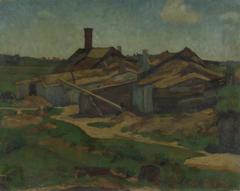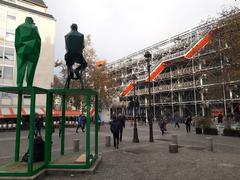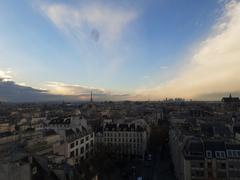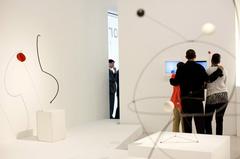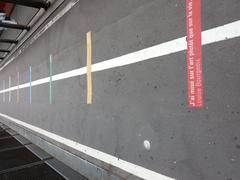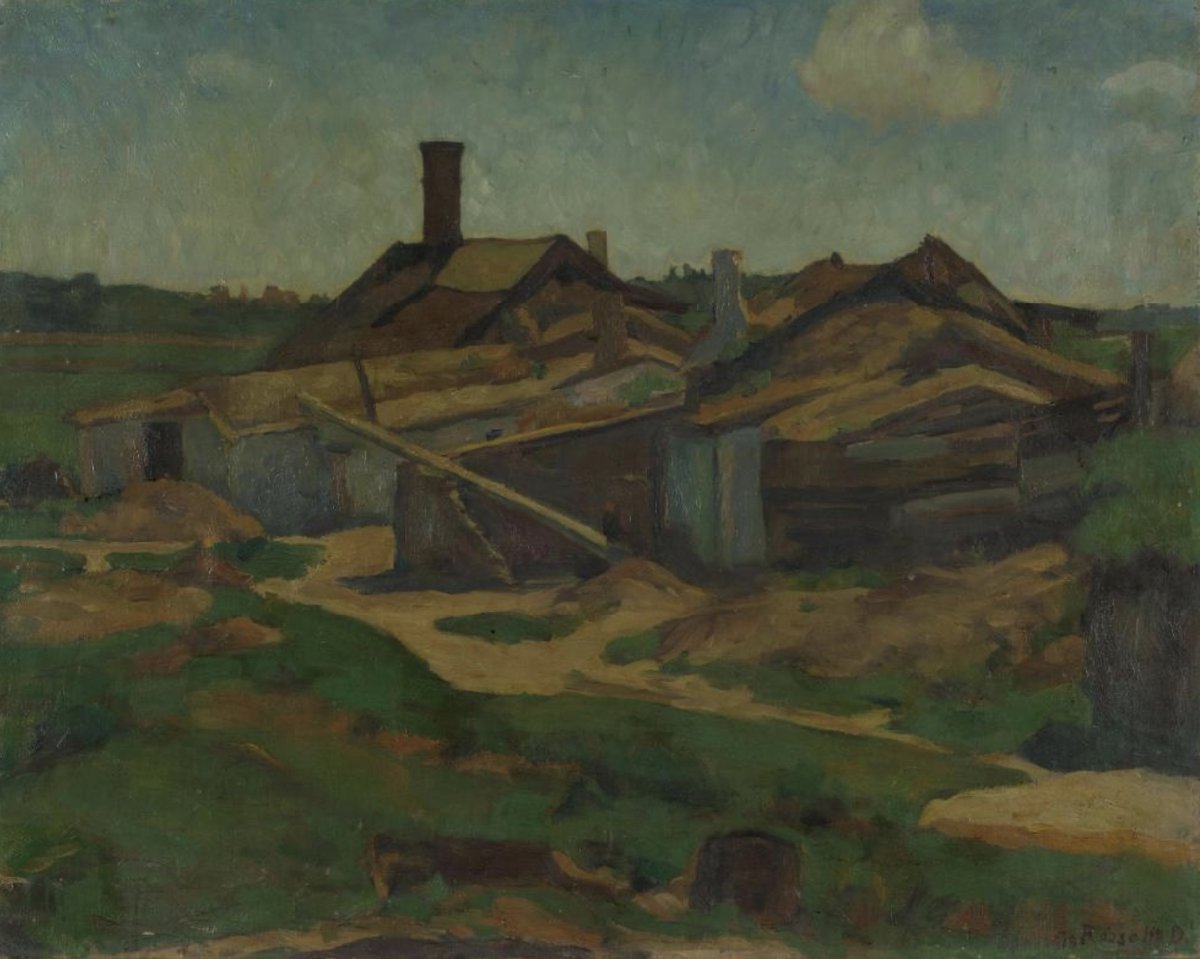
Visiting Centre Georges Pompidou Paris: Complete Guide to Tickets, Hours, and Tips
Date: 14/06/2025
Introduction
The Centre Georges Pompidou is an architectural and cultural icon in the heart of Paris, celebrated for its revolutionary “inside-out” design and its role as a hub for modern and contemporary art. Conceived in the 1960s to reassert Paris’s influence as a global cultural capital, the Centre Pompidou today houses Europe’s largest collection of modern art, a major public library, and research centers. Its daring structure, designed by Renzo Piano, Richard Rogers, and Gianfranco Franchini, remains a symbol of transparency and democratic access to culture. This comprehensive guide covers everything you need to know for a seamless and enriching visit: from ticketing and opening hours to accessibility, collection highlights, and essential travel tips.
Table of Contents
- Introduction
- Historical Context and Significance
- Architecture and Urban Impact
- Visiting Information: Hours, Tickets, Accessibility
- Art Collections and Exhibitions
- Facilities and Services
- Navigating Your Visit
- Special Events and Guided Tours
- Practical Tips
- Frequently Asked Questions (FAQ)
- Conclusion
- Sources
Historical Context and Significance
Origins and Vision
The Centre Pompidou was born out of a desire to invigorate Paris’s cultural landscape. In the early 1960s, André Malraux, France’s first Minister of Cultural Affairs, and later President Georges Pompidou, envisioned a multidisciplinary center to showcase French cultural innovation and heritage. Their goal was to create a space that combined a modern art museum, a public library, and vibrant public areas to foster intellectual and artistic exchange (Centre Pompidou History, Britannica).
Site Selection and Urban Transformation
President Pompidou selected the Plateau Beaubourg in the 4th arrondissement—then an underutilized area adjacent to the historic Marais district. The Centre’s arrival transformed the neighborhood into a lively cultural hub, drawing both Parisians and tourists (RICS Modus).
Architectural Innovation
In 1971, an international design competition yielded the winning, now-iconic “inside-out” proposal by Piano, Rogers, and Franchini. Their design boldly placed the building’s mechanical and structural systems—pipes, ducts, escalators—on the exterior, freeing the interior for flexible exhibition spaces. Exterior elements are color-coded: blue for air, green for water, yellow for electricity, and red for circulation (ArchDaily). This radical approach maximized exhibition space and embodied the Centre’s mission of accessibility and openness (Visit France Earth).
Public Reception and Legacy
Initially polarizing, the building was criticized as an “oil refinery” but soon became a beloved Parisian landmark. Today, the Centre welcomes millions annually and has influenced architectural projects worldwide, including the Lloyd’s building in London and Pompidou branches in Metz, Shanghai, and Malaga (Wikipedia, Why Is Famous).
Architecture and Visitor Experience
The “Inside-Out” Concept
The Centre Pompidou’s exterior turns functional elements into visual features. The famous “caterpillar” escalator in a transparent tube zigzags along the façade, offering panoramic views of Paris. The open piazza below is a vibrant gathering space for events, performances, and street art (Centre Pompidou Official).
Integration with Paris
Located in the Beaubourg district, the Centre contrasts with its historic surroundings while inviting the public to engage with both art and city life. Its terraces provide some of the best views in Paris.
Visiting Information
Location and Access
- Address: Place Georges-Pompidou, 75004 Paris
- Metro: Rambuteau (Line 11), Châtelet (Lines 1, 4, 7, 11, 14), Hôtel de Ville (Lines 1, 11)
- RER: Châtelet Les Halles (Lines A, B, D)
- Bus: Lines 29, 38, 47, 75, plus others
- Bike: Vélib’ stations nearby
- Parking: Limited, reserved spaces for people with disabilities (Accessibility Details)
Opening Hours
-
Regular Hours:
- Monday, Wednesday–Sunday: 11:00 a.m. – 9:00 p.m.
- Thursday: Extended to 11:00 p.m.
- Closed on Tuesdays and May 1st
- Early closing at 7:00 p.m. on December 24th and 31st (Practical Information)
-
Renovation Closures (2025–2030):
- Permanent collection closes March 10, 2025
- Temporary exhibitions continue through September 2025
- Full closure from late 2025 until 2030 for major renovations (Renovation Details)
Tickets and Admission
- Standard Tickets: €15–€17 (adults), €12 (ages 18–25), free for under 18, EU residents under 26, and visitors with disabilities (Ticket Info)
- Rooftop Access: Separate ticket for panoramic views (Rooftop Ticket)
- Discounts: Free entry with Paris Museum Pass, for teachers, journalists, and companions of disabled visitors
- How to Buy:
- Online booking strongly advised to avoid queues (Visitor Instructions)
- Present smartphone ticket and ID for entry
Accessibility
- Priority entrance for people with reduced mobility
- Free wheelchairs and accessible restrooms throughout
- Audio induction loops and EnChroma glasses available
- Guide dogs permitted
- Adapted guided tours and free admission for disabled visitors and a companion (Accessibility Services)
Art Collections and Exhibitions
Overview
The Musée National d’Art Moderne at the Centre Pompidou boasts over 140,000 works, spanning painting, sculpture, photography, architecture, design, and new media (Centre Pompidou). The collection is displayed primarily across two floors:
- Level 5: Modern Art (1905–1965)
- Level 4: Contemporary Art (1965–present)
Modern Collection Highlights (Level 5)
- Fauvism and Cubism: Henri Matisse (“La Blouse Roumaine”), Pablo Picasso, Georges Braque
- Abstraction and Surrealism: Wassily Kandinsky, Marc Chagall, Salvador Dalí, Max Ernst
- Other Movements: Dada (Marcel Duchamp), Bauhaus (Paul Klee), De Stijl (Piet Mondrian)
- Key Masterpieces: Robert Delaunay (“Manège de cochons”) (Tiqets)
Contemporary Collection Highlights (Level 4)
- Pop Art & New Media: Andy Warhol, Joseph Beuys, Annette Messager, Ben Vautier, Frida Kahlo, Yves Klein, Jackson Pollock
- Disciplines: Photography, video, sound art, installations, design objects, digital art
- Dynamic Displays: Thematic and monographic rooms, with frequent temporary exhibitions (Paris Secret)
Temporary Exhibitions & Rotating Displays
- Regularly changing exhibitions focus on major artists, movements, and contemporary themes (Paris Story)
- Notable past exhibitions include retrospectives on Brancusi and Suzanne Valadon
Upcoming Renovations
- Permanent collection galleries close March 10, 2025
- Artworks will be loaned to institutions like the Grand Palais and the Louvre during closure (Time Out)
Facilities and Services
- Cloakroom: Complimentary for coats and bags
- Restrooms: Accessible on all public floors
- Wi-Fi: Free throughout the building
- Dining: Georges Restaurant (rooftop, reservations advised), cafés and snack bars on lower levels (Dining Review)
- Shops: Art books, design objects, souvenirs
- Photography: Permitted without flash except where indicated (Photography Policy)
Navigating Your Visit
- Main entrance via glass escalator tube (the “caterpillar”)
- Allow 2–3 hours to explore exhibitions and rooftop
- Families: Children’s Gallery and family programming (check availability during renovations)
- Library (Bpi): Closed at Pompidou from March 2025, reopening in Lumière Building (12th arrondissement) August 2025
- Cinema and youth programming temporarily relocated during renovations
Special Events and Guided Tours
- Regular guided tours in multiple languages; book in advance
- Special events, workshops, and performances year-round (Official Centre Pompidou)
Practical Tips
- Book tickets online ahead of your visit to avoid queues
- Arrive early or late (especially on Thursdays) for fewer crowds
- Wear comfortable shoes and travel light (no large bags)
- Combine your visit with a stroll in the Marais, Hôtel de Ville, or along the Seine (Le Marais Info)
Frequently Asked Questions (FAQ)
Q: What are the opening hours?
A: Monday, Wednesday–Sunday: 11:00 a.m. – 9:00 p.m.; Thursday until 11:00 p.m.; closed Tuesdays and May 1st.
Q: How do I buy tickets?
A: Purchase tickets online in advance or at the entrance; online booking is recommended.
Q: Who is eligible for free entry?
A: EU residents under 26, children under 18, teachers, journalists, and visitors with disabilities (plus companion).
Q: Is the Centre Pompidou wheelchair accessible?
A: Yes, with priority entrances, accessible restrooms, free wheelchairs, and adapted tours.
Q: Are guided tours available?
A: Yes, in multiple languages; book in advance.
Conclusion
The Centre Georges Pompidou remains a must-visit destination for anyone exploring Paris’s cultural scene. Its avant-garde architecture, world-class art collections, and lively public spaces embody the spirit of modern Paris. As the Centre undergoes extensive renovations from 2025 to 2030, visitors are encouraged to plan ahead, check operational updates, and take advantage of related exhibitions across the city. Enhance your experience with guided tours, the rooftop panorama, and nearby historical neighborhoods. For personalized recommendations and audio guides, download the Audiala app. Stay connected with official resources and social media for the latest news and events.
Sources and Further Reading
- Centre Pompidou Official Website
- Britannica – Pompidou Centre
- ArchDaily – AD Classics: Centre Georges Pompidou
- Domus – Centre Pompidou Closing for Renovation
- Tiqets – Centre Pompidou Tickets and Information
- Why Is Famous – Le Centre Pompidou Overview
- Centre Pompidou Tickets, History, and Travel Tips
- RICS Modus – Buildings That Elevate Cities: The Pompidou Centre
- Paris Secret – Modern Art Collection Centre Pompidou
- Paris Story – Visiting Centre Pompidou
- Discover Walks – Best Way to Visit the Pompidou Centre in Paris
- Come to Paris – Suzanne Valadon Exhibition
- Time Out – What to See at the Centre Pompidou Before It Closes
- Earth Trekkers – Paris Bucket List: Best Experiences
- Visit France Earth – The Centre Pompidou: A Revolutionary Blend of History and Design
- The Nomad Sketchbook – A Journey Through the Centre Pompidou’s Dynamic Architecture
- Dont Be A Tourist – Centre Pompidou
- The Good Life France – A Visit to the Centre Pompidou Paris
